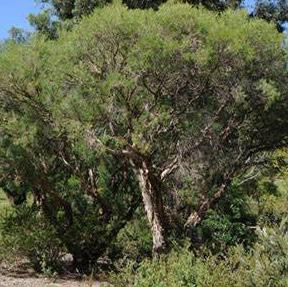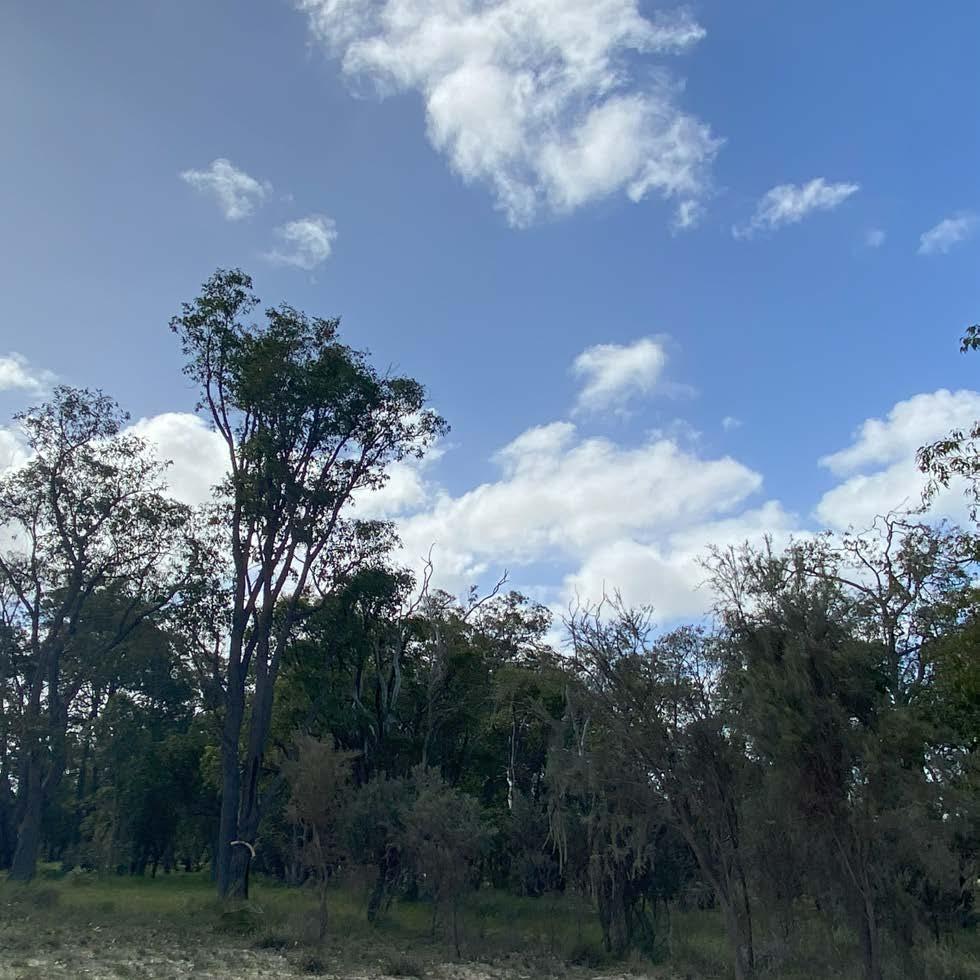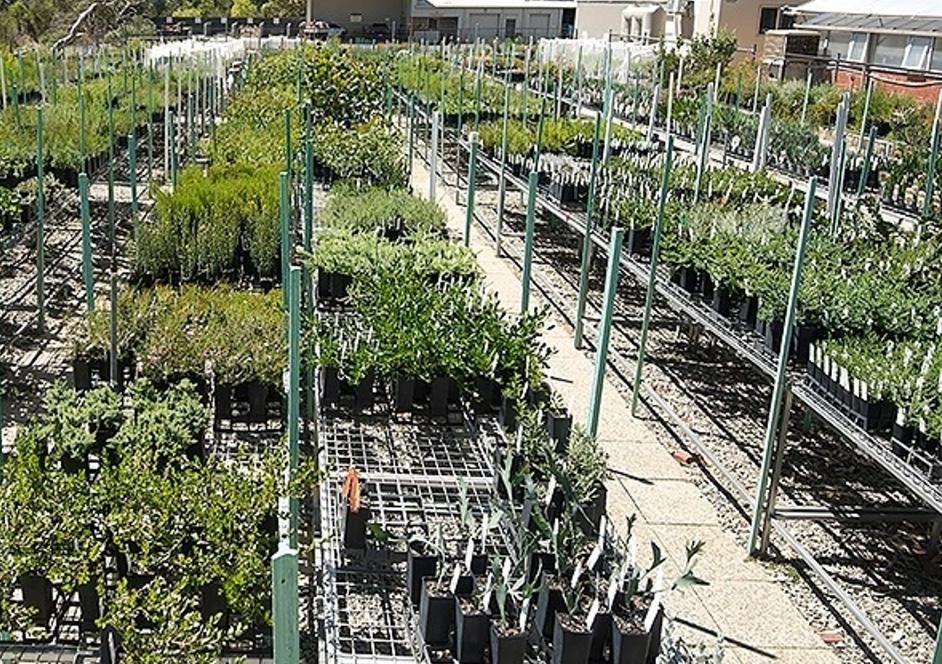ROCKINGHAM REGIONAL MEMORIAL PARK


ARBORETUM / PLANTING GUIDE


Creating and preserving your family’s precious memories * Prepared for UWA LACH5422 Studio only










Creating and preserving your family’s precious memories * Prepared for UWA LACH5422 Studio only





Thank you for considering the Rockingham Regional Memorial Park (RRMP) Arboretum. It is our objective to provide an experience that transcends traditional end of life memorial parks. We invite you to create your own stories and memories on our expansive, considered site. We aspire to create a place of meaning. A place of memories for both the living and those who eventually rest here.
RRMP invites you to engage with our site for all of life’s celebrations - births, marriages, death and the every day. Our multi-functional chapels and pavilions, with their beautiful gardens are outlined in this brochure and available for hire. Or you may choose to walk all or part of our 3km circuit trail / Bidi as either a stand alone walk or a spur to the nearby Kwinana Loop Trail. Along this route you can engage with our remnant bushland, our codesigned indigenous gardens, wildflower displays, bird haven wetland and ephemeral land art.
Our site is primarily an Arboretum. This means we are a collection of trees, specifically memorial plants, which we primarily grow at our onsite nursery. It is well recognised that trees are important for the services they provide to humans (shade, food, carbon sequestration etc), but they also provide important habitat to animals such as the threatened Black and Carnaby cockatoos that frequent our site. Our reduced vehicle speed limits are there to protect our fauna so please drive carefully. It is our philosophy to encourage tree planting now when we most need it. This ensures important tree canopy sooner rather than later and enables authentic connections between your family and your chosen tree over the coming years. You may consider a tree for celebrating a birth or special event. Should you wish, you can tend to your tree at any time or simply picnic under the shade of your growing tree. When your loved ones pass their ashes or composted remains can be buried in your tree’s garden bed. A place of special memories.
In addition, we offer onsite natural burials. These are located at the northern end of the site between our remnant bushland stands.
This guide elaborates on the species choices available in each of these settings. Our Landscape Architecture team are available to discuss further.
We look forward to welcoming you to our memorial park.





Entrance Statement
Meeting Tree
Chapel Gardens water feature
Pavilion Enclosed Banksia Garden
Remnants restoration
Wetland, living stream and swales
Ephemeral Burial Mounds
Indigenous TBD
Natural Burials
Arboretum - Native
Arboretum - Exotics


Our Celebration and Contemplative Spaces
The meeting tree, a Tuckeroo (located beside our Tuckeroo cafe) is likely the first tree you will come face to face with as you congregate in its plentiful shade while waiting for a funeral (weekdays) or a wedding (weekends).
Enjoy the contemplative views of the limestone gardens from the expansive Marri and Jarrah chapel windows. We kindly ask visitors to not access the chapel garden to respect chapel user’s privacy.















Species
The Meeting Tree
Cupaniopsis anacardioides Tuckeroo Sapindaceae H8-15m W5-10m TBC Bird attracting n/a No Cream flowers in Autumn.
The Chapels
Corymbia callophyla Marri Myrtaceae H20m (SCP) x W8m Yes Cottesloe Karrakatta Yes White filamentous flowers January to May.
Eucalyptus marginata Jarrah
General gardens
H15m (SCP) x W10m
Karrakatta
White filamentous flowers June to January.
Banksia praemorsa Cut leaf Banksia Proteaceae H5m x W3m TBC Not found APACE. Yes Yellow to purple flowers July to October.
Banksia integrifolia Coast Banksia Proteaceae H15m x W6m TBC N/A Yes Yellow flowers spring to winter.
Banksia ashbyi dwarf Proteaceae H1.5m x W2m No
Banksia blechnifolia Southern blechnum banksia
H0.4m x Spread 3-4m No
Callitris preisii Rottenest Island pine Cupressaceae H10-20m
fruticosa var. Coastal Rosemary
Conostylis candicans Grey cottonhead
Anigozanthos spp. Various Kangaroo Paw
Schoenia filifolia Showy everlasting daisy
chlorocephala ssp rosea Pink paper daisies
Kennedia prostrata Running postman
Yes Orange flowers December to February.
The Banksia Pavilion is a multifunctional space that can be used for private celebration-of-life services following a natural burial or funeral service, wakes, or even a safe, supportive space for voluntary assisted dying. The space can also be utilised for birthdays, other private celebratory events, as well as art exhiitions.
Our Japanese inspired pavilion has an ‘engawa” style veranda, that surrounds a contemplative sunken, enclosed Banksia and limestone rock dry garden. The pavilion has been carefully built on the site of an existing Banksia attenuata.





The RRMP is located directly opposite the Leda Reserve Bush Forever site. We are also the custodians of ~39Ha of Eucalypt / Banksia bushland located on our site, and committed to its ongoing preservation. These areas are progressively being rehabilitated to remove weeds such as Arum lily (Zantedeschia aethiopica) and Blue lupin (Lupinus cosentinii). RRMP hosts quarterly restoration days to weed our remnants and visit your family’s memorial tree(s).A complimentary morning tea is provided afterwards at the Banksia pavilion.
Natural burials, ash interment nor memorialisation is permitted within the remnant bushland. Instead, we invite you to find a sit spot along our walking trail walls and enjoy their stillness.
You can also enjoy the views from the open Tuart pavilion, which is located at the foot of our site “mother tree” - a Eucalyptus gomphocephala that overlooks the site. This tree is spectacular both day and flood lit at night.







Eucalyptus gomphocephala
Tuart
Corymbia callophyla
Marri
Eucalyptus marginata
Jarrah
Agonis flexuosa
Peppermint
(SCP) x W8m
(SCP) x W10m
x W10m
Karrakatta
Karrakatta
Karrakatta
filamentous flowers January to May.
flowers June to January.
August to December. Banksia attenuata
banksia
Karrakatta
flowers September to October.
A constructed dam is located next to the open Melaleuca pavilion at the southern part of our site. This ground and rainwater fed water body supports expansive birdlife. Native sedges and rushes that are found locally in the area provide important habitat and contribute to softening the groundwater from iron oxides.
You will also recognise these plants next to our carparks in swales, where they again work hard to phytoremediate vehicle pollutants and minimise carpark flooding risk.
Snakes also consider the RRMP home too, so please exercise caution.






Melaleuca rhaphiophylla Swamp paperbark
Gahnia trifida Coast Saw-sedge
Baumea articulata Jointed twig rush
Baumea juncea Bare twig rush
Juncus subsecundus Finger rush
Lepidosperma longitudinale Pithy sword sedge
`
H10m No Bassendean Swamps
H 0.3–1m No
and Karrakata
Baldivis APACE
observed White / cream flowers September to January.
observed Brown flowers October to January.
observed Brown flowers October to December.

Our Indigenous burial space is being developed as a collaborative co-design with local indigenous elders representing the Wadjuk and Bindjareb people of the Noongar nation. This may include six seasons planting, bush tucker / medicine garden, Nuytsia floribunda and other plants of indigenous significance. A space has been allocated for a potential yarn circle.

enjosmith. “Nuytsia floribunda in bloom at Christmas time in Western Australia”, n.d. Digital image. Reproduced from https://www.gardensonline.com.au/GardenShed/PlantFinder/Show_815.aspx
The northern part of our site has been designated for natural burials. These occur outside of the walk trail circuit and between our two existing remnant bush stands.
To ensure the protection of our bushland, certain preconditions must be met for natural burials. Importantly, your loved ones must be free of embalming fluids. In addition, biodegradable shrouds are used instead of traditional caskets.
This area intentionally has a light touch. Most notably there is no path networks. If your visitors have mobility issues we will try to accommodate being close to the sealed paths. As there is no path network, we hand dig these burial plots. Your family is welcome to participate in this ritual. Furthermore, there are no memorial plaques designating burial plots. The plot location is georeferenced and instead we welcome plaques on our memorial walls that fringe our 3km Bidi.

Arboretum - Native trees and shrubs
Native trees, particularly endemic species, are more likely to thrive at RRMP. A selection of proven trees and shrubs that are found on the soils of our site are outlined.
For trees procured from our onsite nursery, the MCB offers a guarantee replacement for the first 10 years.
Shrubs and other smaller flowering plants outlined in previous sections are used to fill in garden beds between trees.
Foldable picnic chairs can be found at designated spots along the walk route. These can be borrowed for spending time with your tree. We kindly ask you return them for the next visitor. Species
Eucalyptus todtiana Coastal blackbutt / Prickly bark
Eucalyptus foecunda
Frnarrow-leaved red mallee








Myrtaceae H8m Yes Cottesloe Karrakatta
Eucalyptus caesia Silver princess Myrtaceae H410m TBC Not specified APACE
Agonis flexuosa
Variegated, Burgundy etc Myrtaceae H6m W4m No
Allocasuarina fraseriana Frasers sheoak
Melaleuca huegelii
Chenille honey myrtle
Banksia grandis
H5-15m
White-cream ffilamentous lowers January to April.
Creamy yellow filamentous flowers June to December.
Red filamentous flowers May to September
No White flowers August to December
Red flowers May to October.
Karrakatta
Myrtaceae H5m No Cottesloe Yes (cemetery) White flowers November to January.
Bull banksia Proteaceae H10m x W3m
Banksia attenuata
Candlestick banksia
Proteaceae H8m Yes Bee attracting
Cottesloe Karrakatta TBC Yellow flowers September to December.
Cottesloe Karrakatta Yes (Remnant) Yellow flowers September to October.











Banksia menziesii Firewood banksia
Banksia sessilis Parrot bush
Callitris preissii Rottness cypress
Jacksonia furcellata Grey stinkwood
Hakea trifurcata Two-leaved hakea
Proteaceae H2-6m Yes
Proteaceae H5m x W3m Yes
Cupressaceae H9m TBC
Fabeaceae H3m No. Bee attracting
Proteaceae H3m Yes. Bee attracting
Cottesloe Karrakatta TBC
Cottesloe Karrakatta TBC Prickly bush. Yellow flowers April to November.
Cottesloe Yes (cemetery) Male cones October to November.
Cottesloe Karrakatta Yes (rehab. area) Existing onsite. Yellow flowers August to March.
Cottesloe Not observed White flowers April to October.
Grevillia sp Myrtaceae Various No Various Yes Typically flower winter/early spring.
Calothamnus quadrifidus One-sided Bottlebrush
Hakea prostrata Harsh Hakea
Kunzea glabrescens Spearwood
Anigozanthos humilis Cats paw
Conostylis aculeata Prickly conostylis
Myrtaceae H1-2m No
Cottesloe Karrakatta Yes (rehab. area) Red flowers July to December.
Myrtaceae H3m TBC Cottosloe Not observed White flowers July to October.
Myrtaceae H1.5 - 4m No Karrakatta Not observed Yellow flowers October to November.
No
H0.6m No
Cottesloe Karrakatta Yes Yellow red flowers August to October.
Cottesloe Karrakatta Yes Yellow flowers September to October.
It is recognised that prospective customers may have attachments to certain exotic trees. As such, a contained area close to the existing site is designated for non-native tree memorials.
As our site is located within Black and Carnaby cockatoo roosting areas, cockatoo attracting exotic trees are highly recommended.
PSHB host trees should be avoided (DPIRD), as well as other known declared pests or disease vulnerable species.
All other exotic trees shall be assessed on a case-bycase basis to ascertain canopy size, water requirements, soil preferences, climatic limits etc.
This garden is also used as a sentinel garden (e.g. for WestPort) to monitor for emerging pests and diseases. Our trees help to inform scientists of early detection prior to spread to urban canopies and agricultural areas.
As per our native Arboretum, foldable picnic chairs can be found at designated spots along the walk route. These can be borrowed for spending time with your tree. We kindly ask you return them for the next visitor.


Sustainability is a core tenet of RRMP. As such, tributes such as silk flowers can only be displayed at our traditional burial sites at the north-east and south-east burial sites. All other areas are tribute free to protect wildlife and the environment.
Instead, two standard memorialisation plaques are offered. In the arboretum, you can elect to have a traditional tree naming plaque with your family name subtlety below the plant’s family name. Should you prefer more detail of your loved one this can be supplemented with, or replaced by, a brass plaque on the brick face wall along our bidi.



Our plant nursery
Our onsite nursery offers a selection of proven natives and popular exotics. The benefit of onsite cultivation is the plants have better acclimatised to our site specific conditions. These can be procured in various pot sizes (refer below).
The nursery’s horticulturalists are also skilled plant propogationists. They are only to happy to discuss the feasibility of taking a cutting, tissue culture or grafting from an important tree in your life to grow and plant as an offspring at RRMP.
In the first instance please direct any queries about the nursery and/or the arboretum to our friendly administrative crew. Administration can also advise of associated costs.

Unknown., Tree size guide. n.d. Digital Image. Reproduced from: https://thetreestore.co.za/trees

